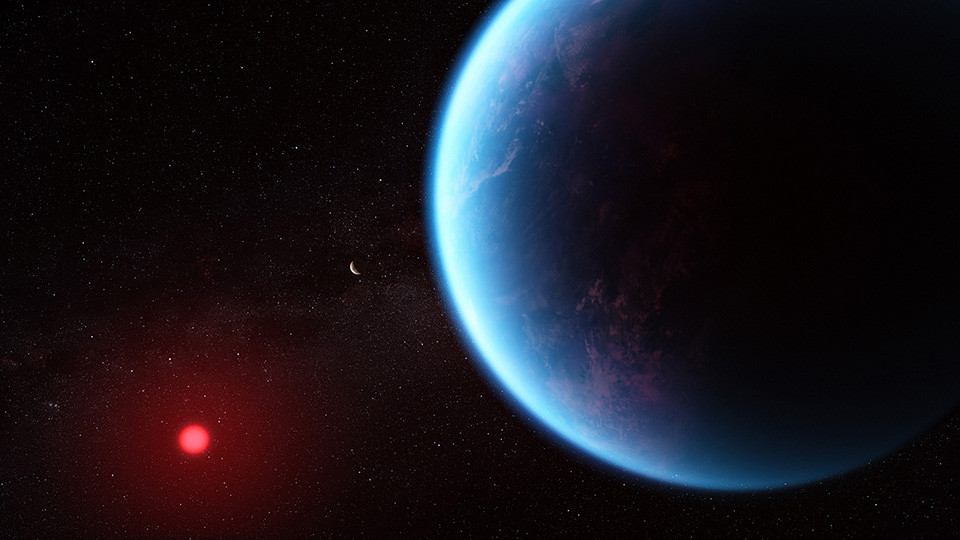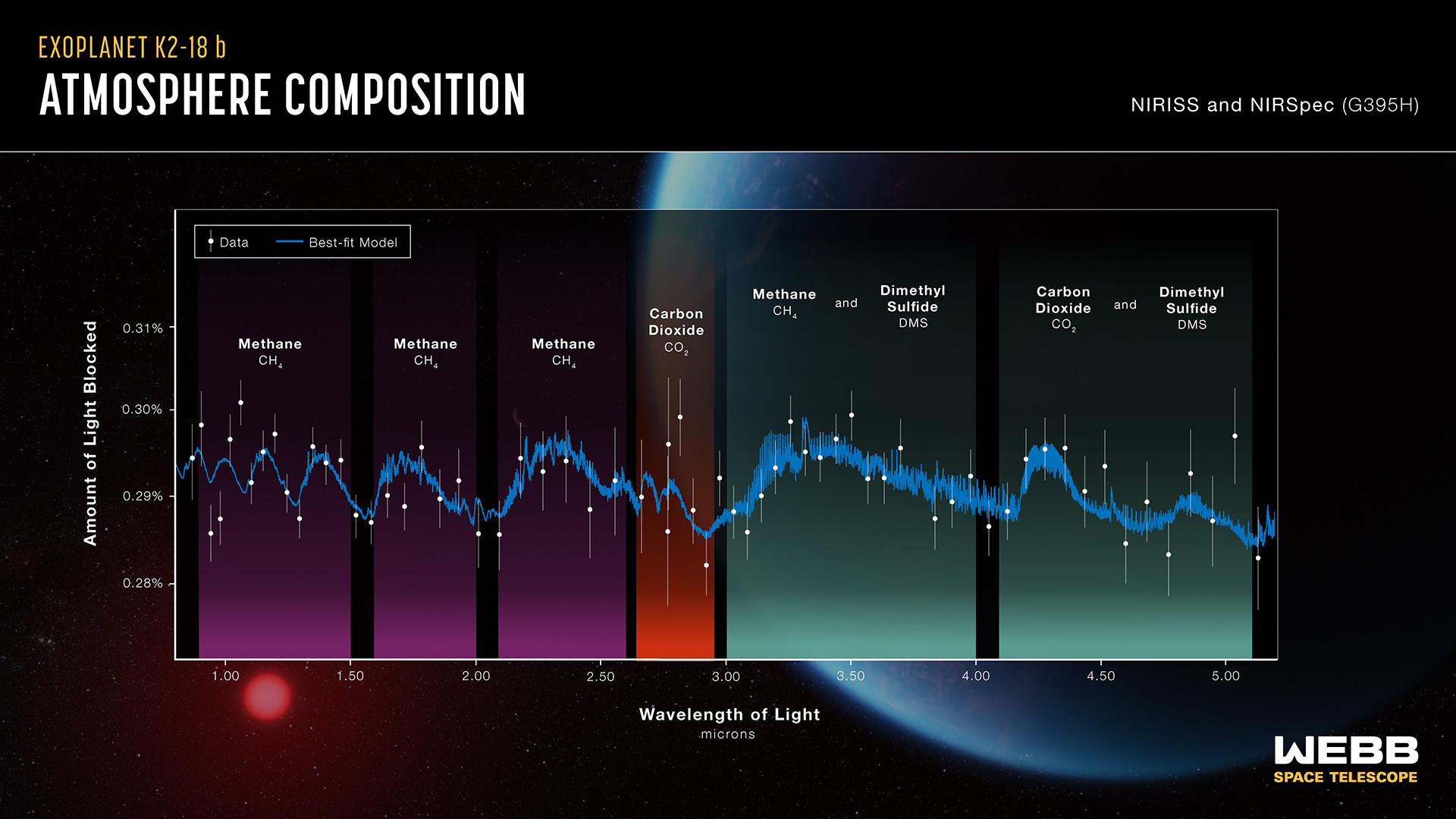The cosmos is vast, and within it lies a multitude of mysteries, one of the most captivating being the question of life beyond Earth. Recent groundbreaking discoveries from NASA’s James Webb Space Telescope have turned the spotlight onto an exoplanet named K2-18 b, igniting fervent discussions about its potential to harbor life. These revelations, including the detection of carbon-bearing molecules like methane and carbon dioxide, suggest K2-18 b could be a Hycean exoplanet, characterized by a hydrogen-rich atmosphere and a planet-wide water ocean. But before delving deeper into its potential habitability, a fundamental question arises: where exactly is this distant world located? Understanding the location of K2-18 b is crucial to appreciating the magnitude of this discovery and our ongoing quest to find our place in the universe.
Discovering K2-18 b: A Journey Through Space and Time
Our understanding of K2-18 b has evolved over time, starting with its initial detection and culminating in the detailed atmospheric analysis by the James Webb Space Telescope. The journey to uncover the secrets of this exoplanet is a testament to the advancements in space exploration and our relentless curiosity about what lies beyond our solar system.
The Initial Detection by NASA’s K2 Mission
The story of K2-18 b begins with NASA’s Kepler K2 mission. Launched in 2009, the Kepler space telescope was designed to discover exoplanets, planets orbiting stars outside our Sun. In 2015, utilizing the transit method – observing the slight dip in a star’s brightness as a planet passes in front of it – the K2 mission identified K2-18 b. This marked the initial pinpointing of K2-18 b’s existence, placing it on the map of known exoplanets. This early discovery was crucial, highlighting K2-18 b as a subject of interest for future, more in-depth investigations.
Webb Telescope’s Deeper Look
While the K2 mission confirmed the existence of K2-18 b, it was the unparalleled capabilities of the James Webb Space Telescope that truly brought this exoplanet into focus. Webb, with its advanced infrared instruments, can analyze the light that passes through an exoplanet’s atmosphere, revealing its chemical composition. By observing the starlight filtering through K2-18 b’s atmosphere, Webb has provided us with unprecedented insights. The detection of methane, carbon dioxide, and the possible presence of dimethyl sulfide (DMS) are all thanks to Webb’s detailed spectroscopic analysis, moving K2-18 b from a mere point in space to a world with intriguing atmospheric characteristics.
Pinpointing K2-18 b’s Location: Constellation Leo and Light-Years Away
To truly grasp the location of K2-18 b, we need to understand its cosmic address. This involves two key aspects: its distance from Earth and its position within our night sky.
120 Light-Years from Earth
K2-18 b is not our neighbor; it resides at a considerable distance of approximately 120 light-years away from Earth. To put this into perspective, one light-year is the distance light travels in a year, an astonishing 5.88 trillion miles (9.46 trillion kilometers). Therefore, 120 light-years translates to an immense distance. The light we are currently detecting from K2-18 b has been traveling through space for 120 years, meaning we are seeing the exoplanet as it was over a century ago. This vast distance underscores the technological marvel of detecting and analyzing such a far-off world.
Located in the Constellation Leo
In terms of its position in our night sky, K2-18 b is situated within the constellation Leo. Constellations are groupings of stars that form patterns as seen from Earth. Leo, easily recognizable by its shape resembling a lion, is a prominent constellation in the Northern Hemisphere’s spring sky. While K2-18 b itself is not visible to the naked eye, knowing it resides in the direction of Leo helps astronomers pinpoint its general location. It orbits a cool dwarf star named K2-18, which is much fainter and cooler than our Sun. Therefore, when we look towards the constellation Leo, we are looking in the general direction of the K2-18 system and the potentially habitable exoplanet, K2-18 b.
 Artist Concept-Exoplanet K2-18 b
Artist Concept-Exoplanet K2-18 b
Why K2-18 b’s Location Matters: Habitable Zone and Hycean Potential
The location of K2-18 b is not just a matter of cosmic geography; it is fundamentally linked to its potential habitability and the scientific excitement surrounding it. Two key concepts are crucial here: the habitable zone and the Hycean exoplanet theory.
The Habitable Zone of K2-18
K2-18 b orbits its star, K2-18, within what is known as the habitable zone, often referred to as the “Goldilocks zone.” This is the region around a star where temperatures are just right to allow liquid water to exist on a planet’s surface. Liquid water is considered essential for life as we know it, making planets in the habitable zone prime targets in the search for extraterrestrial life. The fact that K2-18 b resides in this zone significantly elevates its importance in exoplanet research. It suggests that if the planet has the right conditions, liquid water oceans – a key component of Hycean worlds – could potentially exist.
Implications for Hycean Exoplanet Research
The location of K2-18 b, combined with Webb’s atmospheric findings, strongly supports the hypothesis that it could be a Hycean exoplanet. Hycean planets are a relatively new classification of exoplanets that are characterized by being larger than Earth but smaller than Neptune, possessing hydrogen-rich atmospheres and potentially vast water oceans. These worlds are considered particularly intriguing in the search for life because their oceans could offer a stable and potentially habitable environment. K2-18 b’s location within the habitable zone of its star, coupled with the detection of carbon-bearing molecules and the possibility of a water ocean beneath a hydrogen-rich atmosphere, makes it a leading candidate in the ongoing exploration of Hycean worlds and their life-hosting potential.
What Makes K2-18 b Special? Atmosphere and Potential for Life
While its location in the habitable zone is crucial, it is the atmospheric composition of K2-18 b, revealed by the James Webb Space Telescope, that truly sets it apart. The detection of specific molecules has profound implications for its potential habitability.
Carbon-Bearing Molecules and the Atmosphere
Webb’s observations revealed a significant presence of carbon-bearing molecules, specifically methane (CH4) and carbon dioxide (CO2), in K2-18 b’s atmosphere. These molecules are significant because they are key components in organic chemistry and can be associated with biological processes. Furthermore, the relatively low levels of ammonia detected also support the Hycean world hypothesis, suggesting a water ocean beneath a hydrogen-rich atmosphere. This combination of atmospheric components makes K2-18 b unlike any planet in our solar system and further fuels the scientific interest in understanding its nature.
The Intriguing Possibility of DMS
Perhaps the most tantalizing finding from Webb’s initial observations is the possible detection of dimethyl sulfide (DMS). On Earth, DMS is exclusively produced by life, primarily by phytoplankton in marine environments. The detection of DMS, even if tentative and requiring further validation, is a potentially groundbreaking hint that biological activity could be present on K2-18 b. Future observations with the James Webb Space Telescope are planned to confirm the presence and abundance of DMS, which could revolutionize our understanding of life beyond Earth.
 Spectra of K2-18 b
Spectra of K2-18 b
Conclusion: A Distant World, A Closer Look at Life’s Potential
So, Where Is K2-18 b? It is 120 light-years away in the constellation Leo, orbiting a cool dwarf star within its habitable zone. However, its location is only the starting point of its fascinating story. The James Webb Space Telescope’s revolutionary observations have transformed K2-18 b from a distant point of light into a compelling candidate in our search for life beyond Earth. The presence of carbon-bearing molecules, the potential for a water ocean, and the tantalizing hint of DMS all point towards a world that demands further scrutiny. As we continue to explore K2-18 b with Webb and future telescopes, we move closer to answering the age-old question: are we alone in the universe? K2-18 b, in its distant location, may hold vital clues in this profound quest.


